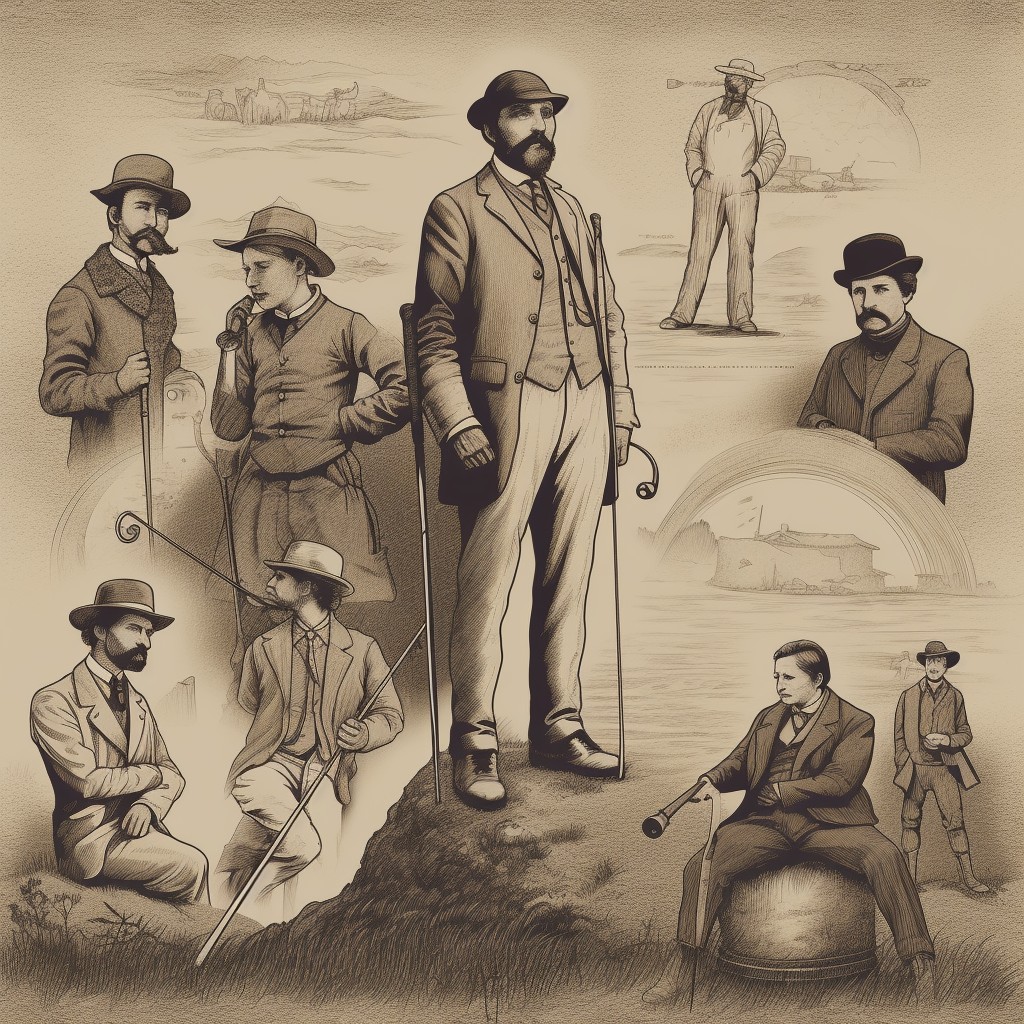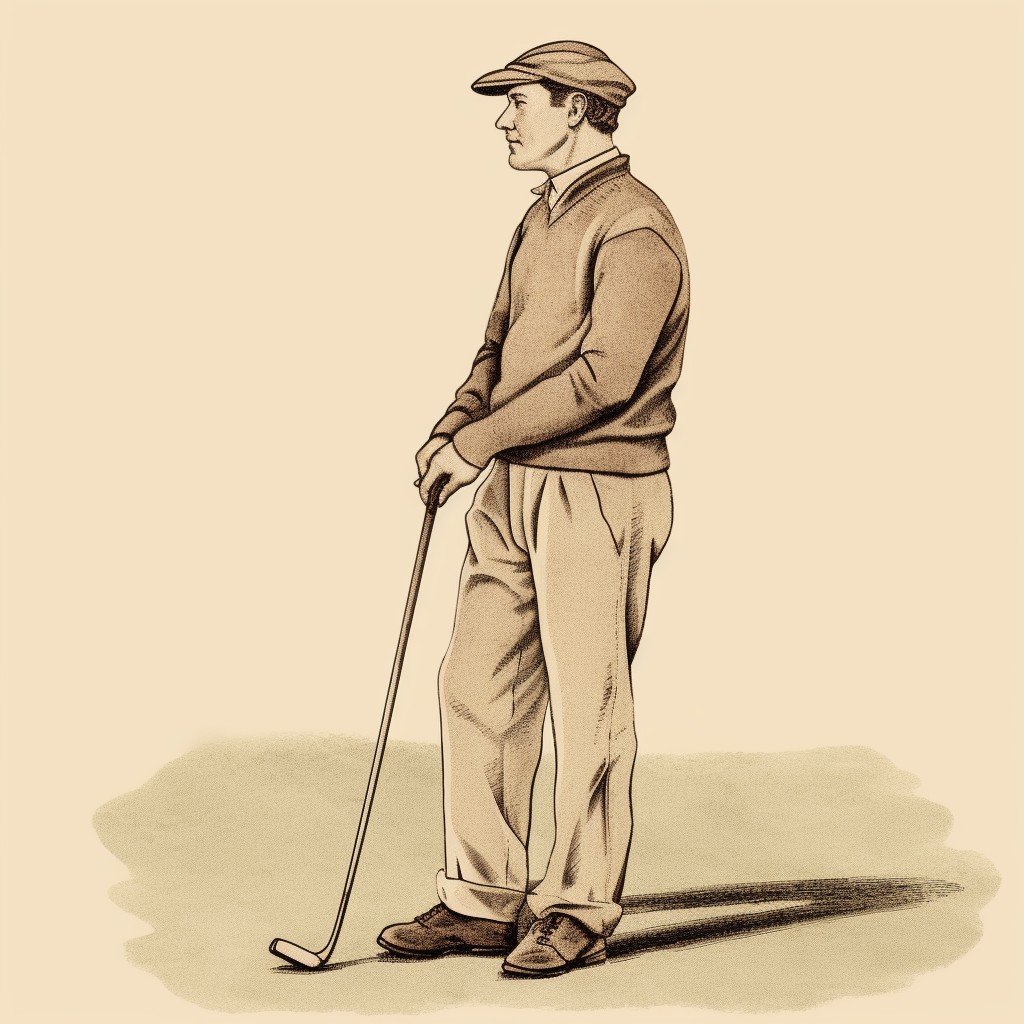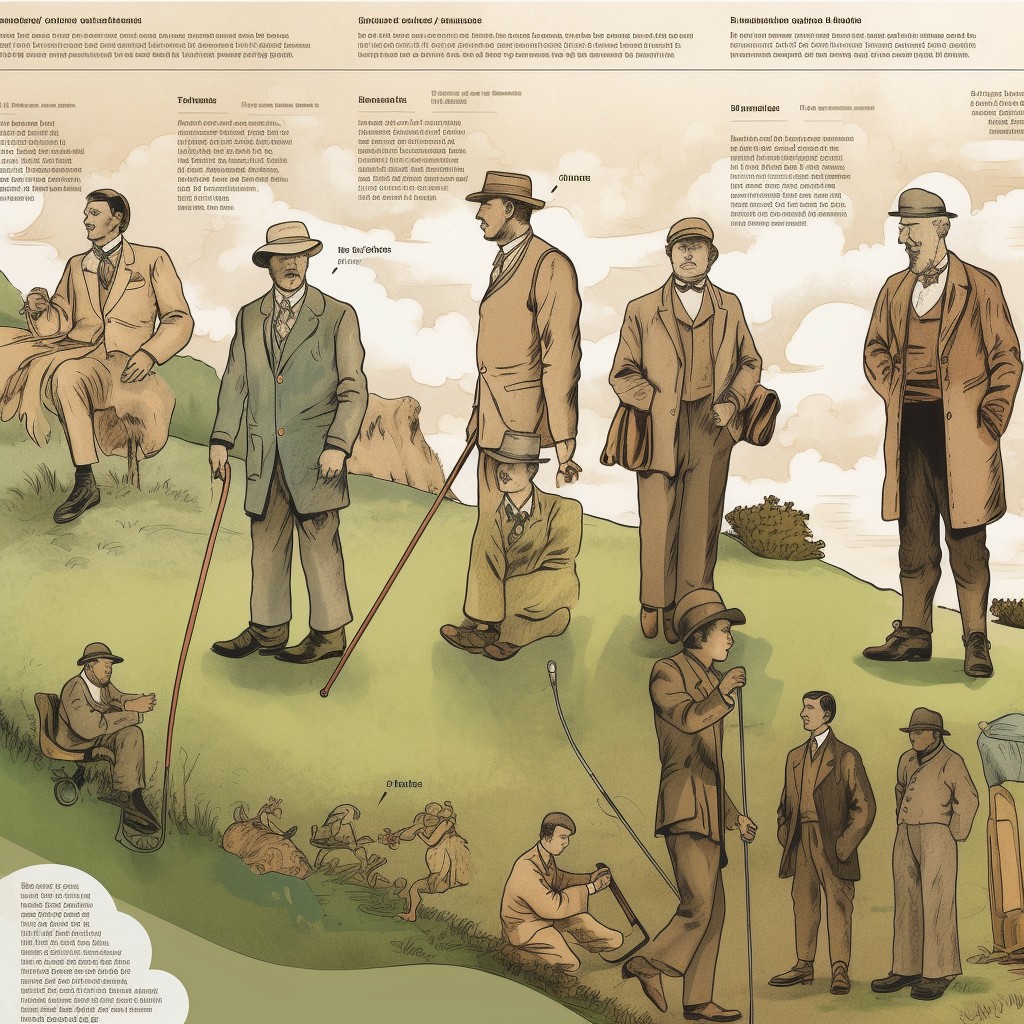
It’s fascinating to think about how our beloved game of golf has evolved over the centuries, isn’t it? Well, you’re in for a treat! We’re going to embark on a journey through time to explore golf’s rich history. From its ancient precursors to its Scottish origins, and from its global expansion to the modern era, we’ll uncover the stories that shaped the game we know and love today. Are you ready? Let’s dive in!

Brief Overview of Golf’s History
Golf boasts a long and storied past. It has captivated players and spectators alike for hundreds of years. Though the origins of the game are shrouded in mystery, it’s clear that golf as we know it today has been shaped by a variety of influences and has undergone significant transformations.
Importance of understanding golf’s origins
Appreciating the game’s history adds depth to our experience on the green. It connects us to the generations of players who came before us. By understanding the origins of golf, we can gain a deeper respect for the traditions that define it and perhaps even improve our own skills by learning from the past. So, grab your clubs and join us as we take a swing through the history of golf!
Ancient Precursors to Modern Golf
Isn’t it incredible to think that the roots of golf can be traced back to ancient civilizations? Long before the modern game took shape, various cultures enjoyed sports that shared similarities with golf. Let’s explore a few of these ancient games and see how they may have contributed to the development of golf as we know it today.
Roman Game of Paganica
Picture this: Ancient Roman soldiers, thousands of years ago, hitting a leather ball filled with feathers! Sounds a lot like golf, right? This game, called Paganica, was played with a curved stick, and the objective was to hit the ball into a target. Although it’s uncertain how directly Paganica influenced golf, it certainly showcases the timeless appeal of hitting a ball with a stick!
Chinese Game of Chuiwan
Imagine traveling back to China’s Song Dynasty, around 1,000 years ago, and discovering a game strikingly similar to golf. That’s Chuiwan for you! This game involved hitting a small ball into a hole using different clubs. The similarities to golf are uncanny, and it’s possible that Chuiwan’s concepts made their way to Europe through trade and cultural exchange.
Dutch Game of Kolven
Now, let’s hop over to the Netherlands during the Middle Ages. Here, we find the game of Kolven, which involved striking a ball with a wooden club towards a target. Dutch paintings from the period often depict players enjoying this game on frozen canals. It’s believed that the Dutch game may have influenced the Scottish version of golf, and some even argue that the word “golf” is derived from the Dutch term “kolf,” which means “club.”
While the origins of golf remain a topic of debate, it’s clear that the game has been shaped by a multitude of cultural influences. The ancient games of Paganica, Chuiwan, and Kolven each offer a glimpse into the early beginnings of a sport that continues to captivate us today.

The Birth of Golf in Scotland
Ah, Scotland! The beautiful land of kilts, bagpipes, and, of course, golf! Widely regarded as the birthplace of modern golf, Scotland has played a crucial role in shaping the game we love. Let’s travel back in time to explore the early days of golf in this enchanting country.
Early Forms of the Game in the Middle Ages
It’s the 15th century in Scotland, and golf is already capturing hearts and minds. Early forms of the game involved hitting a small ball with a wooden club across open fields towards a target, usually a hole. However, this new pastime wasn’t always met with open arms. In fact, in 1457, King James II of Scotland banned golf because it distracted his subjects from practicing archery, an essential skill for national defense!
The Role of the St. Andrews Links
Now, let’s visit the iconic St. Andrews Links, often referred to as the “Home of Golf.” Established in the 1400s, this legendary golf course has played a central role in the game’s development. The Old Course at St. Andrews is not only the oldest golf course in the world but also the site where the standard 18-hole layout was established. Golfers from all around the globe dream of playing on these hallowed grounds.
The Development of Golf’s Basic Rules and Principles
Golf in Scotland wasn’t just about playing the game; it was also about defining its rules and principles. In 1744, the Gentlemen Golfers of Leith, later known as the Honourable Company of Edinburgh Golfers, created the first known set of golf rules for a competition. This momentous event laid the foundation for the modern rules that govern our beloved sport.
From its humble beginnings in the Middle Ages to the establishment of the St. Andrews Links and the creation of golf’s first rules, Scotland has been at the heart of golf’s evolution. As we stand on the tee box, ready to launch our drive, we can’t help but feel grateful for the rich Scottish heritage that has shaped our favorite pastime.

The Spread of Golf Across the British Isles
Golf’s popularity didn’t stop at Scotland’s borders. It soon spread across the British Isles. Let’s take a look at how the game captured the hearts of players in England, Ireland, and Wales.
Golf’s Popularity in England, Ireland, and Wales
The British Isles provided the perfect backdrop for golf. As early as the 16th century, the game reached England. King James IV of Scotland and later King James VI of Scotland and I of England played a big part in this. Soon after, Ireland and Wales joined the golf craze. Golf became an essential part of the sporting culture.
Influence of the British Royalty and Aristocracy
The British royalty and aristocracy loved golf. Kings, queens, and nobles alike played the game. They even built golf courses on their estates! This royal endorsement fueled golf’s growth in the region.
Establishment of Iconic Golf Courses and Clubs
During this time, famous golf courses and clubs emerged. Some of the oldest and most prestigious clubs include the Royal Blackheath Golf Club in England and the Royal Curragh Golf Club in Ireland. These iconic clubs helped shape golf’s future.
So, as we admire the beautiful landscapes of the British Isles, let’s remember how golf’s popularity spread across these lands. Thanks to the passion of players and the support of royalty, golf became a beloved pastime throughout the region.

Golf Goes Global: The Expansion to North America and Beyond
Golf’s journey didn’t stop at the British Isles. It ventured across the Atlantic and around the globe. From North America to Asia and Africa, golf spread its wings and captured the hearts of players worldwide. Let’s explore how golf became a truly international sport.
Introduction of Golf in the United States and Canada
In the late 19th century, golf crossed the Atlantic and arrived in North America. The first golf club in the United States, St. Andrews Golf Club, was founded in Yonkers, New York, in 1888. Not far behind, Canada welcomed its first club, the Royal Montreal Golf Club, in 1873. Golf quickly gained popularity on this new continent, and the number of golf courses and clubs grew rapidly.
The Birth of Professional Golf and Major Championships
As golf gained a foothold in North America, the sport’s professional era began. The first U.S. Open took place in 1895, followed by the PGA Championship in 1916. Alongside the British Open and the U.S. Amateur, these tournaments formed the foundation of today’s major championships. Golf’s growing professional scene attracted talented players and excited fans, further boosting the sport’s global popularity.
Golf’s Growth in Other Countries and Continents
Golf’s journey didn’t end in North America. The game spread to countries like Australia, South Africa, and Japan, where it became a favorite pastime. Golf’s international reach continued to grow, and today, the sport is enjoyed by millions of players across every continent.
From its humble beginnings in Scotland to its rapid expansion across the globe, golf has truly become a worldwide phenomenon. As we step onto the green, we’re part of an international community of golf lovers, all connected by our passion for this incredible game.

The Evolution of Golf Equipment and Technology
Golf has come a long way since its early days in Scotland. As the game spread worldwide, golf equipment and technology evolved, too. From wooden clubs and featherie balls to modern innovations, let’s explore how these advancements have shaped the way we play the game.
From Wooden Clubs and Featherie Balls to Modern Materials
In the beginning, golfers used wooden clubs and featherie balls. These balls were made of leather and stuffed with feathers. Over time, equipment materials changed. The gutta-percha ball replaced the featherie, and eventually, rubber and other synthetic materials took over. Clubs evolved too, with the introduction of steel shafts, graphite shafts, and advanced clubhead designs. These innovations made the game more enjoyable and accessible to players of all skill levels.
The Impact of Technological Advancements on Golf’s Strategy and Accessibility
Technology has had a profound impact on golf. With advancements in club and ball design, golfers can now hit shots with greater accuracy, control, and distance. These improvements have changed the way golfers strategize on the course and have made the game more exciting for both players and spectators. Additionally, technology has made golf more accessible, with equipment designed to suit the needs of golfers of various abilities and ages.
The Role of Golf Course Design in Shaping the Game
As golf equipment evolved, so did golf course design. Early courses were often built on natural landscapes, with few modifications. Over time, architects began to design courses with specific challenges in mind, incorporating hazards like bunkers, water, and undulating greens. These innovations in course design have added another layer of intrigue to the game, challenging golfers to develop their skills and adapt their strategies.
From the simple wooden clubs of the past to today’s cutting-edge technology, the evolution of golf equipment has revolutionized the game. As we stand on the tee box, gripping our high-tech clubs, we can appreciate the incredible journey golf has taken, and look forward to the innovations that await us in the future.

Golf in the Modern Era: Celebrating the Game’s Stars and Milestones
The modern era of golf has seen incredible players, unforgettable moments, and groundbreaking achievements. As fans of the game, we can’t help but marvel at the accomplishments of our favorite golfers and celebrate the milestones that have shaped the sport. Let’s take a look at some of the highlights of golf in the modern era.
The Rise of Golf Legends
From Ben Hogan and Arnold Palmer to Jack Nicklaus and Tiger Woods, golf’s modern era has been graced with legendary players. These icons have not only shattered records but also inspired millions of fans with their skill, passion, and dedication. They’ve changed the way we view the game and paved the way for future generations of golfers.
Related Article: Tiger Woods RICH Lifestyle Inside Edition
Memorable Moments and Thrilling Achievements
The modern era has given us unforgettable moments on the green. From epic comebacks and playoff showdowns to record-breaking performances, these events have left an indelible mark on golf’s history. These thrilling achievements keep us on the edge of our seats and remind us of the excitement that makes golf such a beloved sport.
Expanding the Reach of Golf Through Diversity and Inclusivity
One of the most significant aspects of the modern era has been the increased focus on diversity and inclusivity in golf. Efforts to make the game more accessible to players of all backgrounds, genders, and abilities have helped to create a more welcoming environment on and off the course. From the growth of women’s golf to the development of adaptive golf programs, the sport has come a long way in embracing a broader audience.
As we reflect on the modern era of golf, we can appreciate the incredible players, moments, and milestones that have defined the game. With each swing of the club, we’re not only enjoying our time on the course but also contributing to the rich tapestry of golf’s ongoing story.
Related Article: The Untold Story of Black Golfers

The Future of Golf: Embracing New Developments and Challenges
As we look ahead, the future of golf is filled with exciting possibilities and challenges. From advancements in technology and course design to a renewed focus on sustainability, the game we love continues to evolve. Let’s explore what the future may hold for the world of golf.
The Role of Technology in Shaping Golf’s Future
Technology has already revolutionized the game, and there’s no sign of it slowing down. From advanced golf simulators and swing analysis tools to performance-enhancing gear and smart gadgets, technology promises to play an even bigger role in the coming years. These innovations will help players improve their skills and make the game even more enjoyable for all.
Sustainable Golf and Environmental Awareness
Golf courses require vast amounts of land, water, and resources. With growing concerns about climate change and resource scarcity, the future of golf will need to embrace sustainability. From eco-friendly course design and maintenance practices to the use of renewable energy and water conservation, the golf industry must strive to minimize its environmental footprint.
Attracting Younger Generations and Expanding Participation
To ensure golf’s continued growth, it’s crucial to attract younger generations and broaden participation. Initiatives like junior golf programs, affordable access to courses, and innovative formats will play a vital role in engaging new players. By making golf more accessible and appealing to a diverse audience, the sport can continue to thrive in the years to come.
As we look to the future, it’s clear that golf will face new developments and challenges. By embracing these changes and focusing on sustainability, technology, and inclusivity, the game can continue to grow and captivate players around the world. We, as golf enthusiasts, have a lot to look forward to as the sport we love continues to evolve.
Related Article: Charlie Woods SHOCKS Golf World

In Conclusion: Celebrating Golf’s Rich History and Exciting Future
From its humble beginnings in Scotland to its remarkable growth across the globe, golf has come a long way. As we’ve explored the game’s captivating history, we’ve seen how it has evolved and adapted over the centuries. From early forms of the game and the establishment of iconic courses to the incredible achievements of modern players and the innovative technologies that have transformed the sport, there’s no denying that golf has a rich and fascinating story.
As we look to the future, the game will continue to change and grow, facing new challenges and embracing exciting developments. Whether it’s through advances in technology, a focus on sustainability, or a commitment to inclusivity, golf will continue to capture the hearts of players and fans alike.
So, as we step onto the course, ready to tee off, let’s take a moment to appreciate the incredible journey that golf has taken. We’re part of a global community of golf lovers, united by our passion for the sport and our appreciation for its storied past and bright future. Here’s to many more enjoyable rounds and unforgettable moments on the green!

Frequently Asked Questions
Q: Where did golf originate?
A: Golf originated in Scotland during the 15th century, although similar games were played in earlier times in different parts of the world.
Q: What are some of the most famous golf courses in the world?
A: Some of the most famous golf courses include St. Andrews (Scotland), Augusta National (USA), Pebble Beach (USA), and Royal County Down (Northern Ireland).
Q: What are the major championships in golf?
A: The four major championships in professional golf are The Masters, the U.S. Open, The Open Championship (also known as the British Open), and the PGA Championship.
Q: How has golf equipment evolved over time?
A: Golf equipment has evolved significantly, from wooden clubs and featherie balls to modern materials like steel, graphite, and advanced clubhead designs. Balls have also evolved from leather stuffed with feathers to rubber and synthetic materials.
Q: What are some of the challenges facing the future of golf?
A: Some challenges facing golf in the future include embracing sustainable practices, attracting younger generations, and expanding participation. Golf must also continue to adapt to advancements in technology and changes in the environment.
We want to hear from you! Let us know your comments below.

ABOUT THE AUTHOR
Jim has been an avid golfer and golf fan for over 40 years. He started a YouTube channel called Golf Plus about a year ago and it has been wildly successful. It only made sense to expand and reach more golfers with this site and social media. You can learn more about Jim and Golf Plus Media Group by visiting our About Page.






